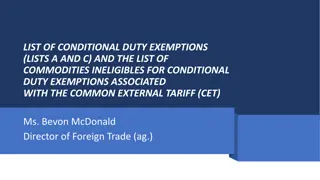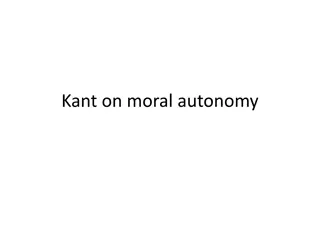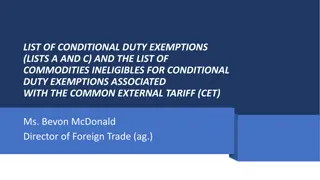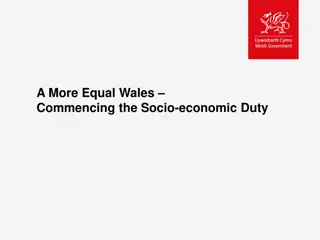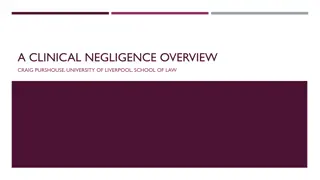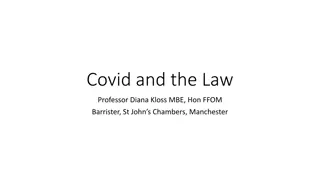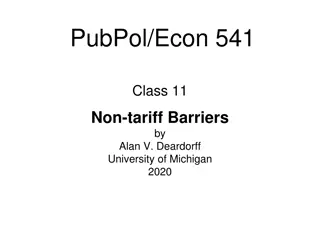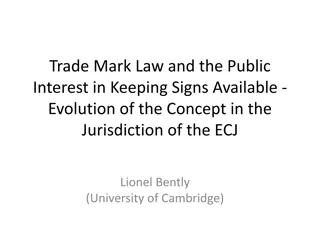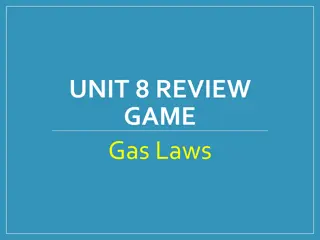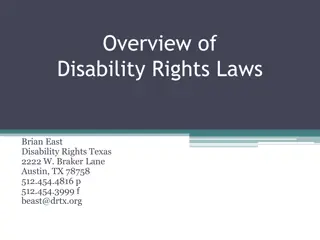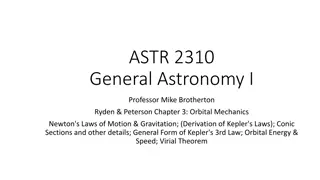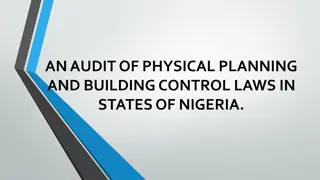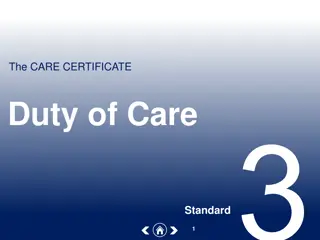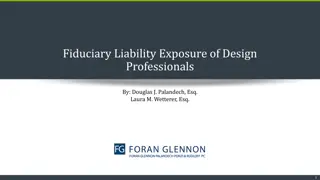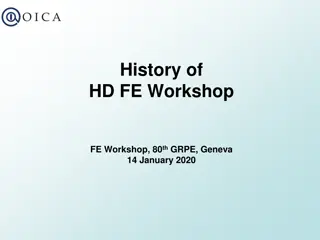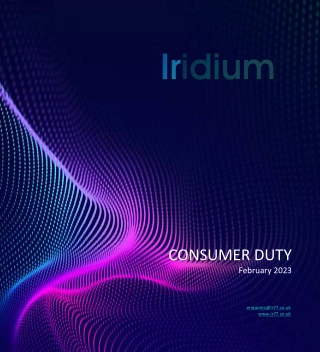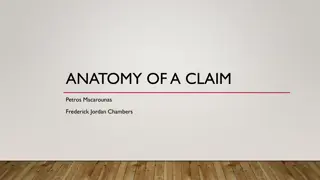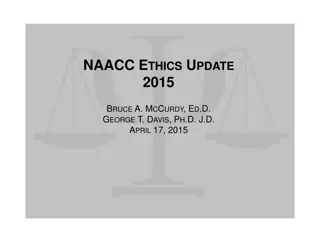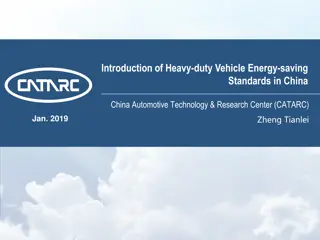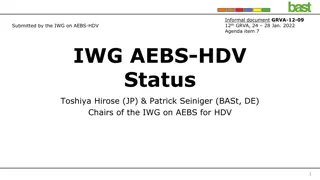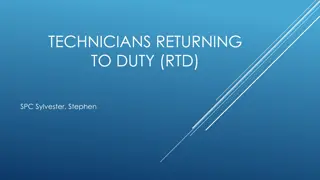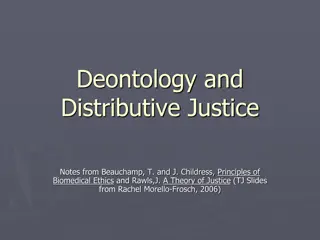Understanding U.S. Antidumping and Countervailing Duty Laws
Explore the rationale behind the existence of antidumping and countervailing duty laws in the U.S., the roles of Commerce and the ITC in enforcing these laws, definitions of dumping and antidumping duty, and the nuances of fair comparison in determining unfair trade practices. Learn how these laws apply differently in market economies versus non-market economies.
Download Presentation

Please find below an Image/Link to download the presentation.
The content on the website is provided AS IS for your information and personal use only. It may not be sold, licensed, or shared on other websites without obtaining consent from the author. Download presentation by click this link. If you encounter any issues during the download, it is possible that the publisher has removed the file from their server.
E N D
Presentation Transcript
U.S. Antidumping and Countervailing Duty Laws
Why Do the Unfair Trade Laws Exist? Antidumping (AD) Law remedies unfairly priced imports that injure or threaten to injure an American industry. Countervailing Duty (CVD) Law - remedies subsidized imports that injure or threaten to injure an American industry. 2
Commerce vs. ITC Commerce determines whether and to what extent dumping or subsidization is occurring. ITC determines whether a U.S. industry competing with the allegedly dumped product has been materially injured, or threatened by such imports. Commerce and the ITC make their determinations independently 3
What is an Antidumping Duty? 4
What is Dumping? Dumping occurs when a foreign producer sells its product at a lower price in the U.S. at less than normal value. Normal value may be prices in its home country, other third country markets, cost of production, or in cases involving non-market economy countries, factors of production. 5
Overview of the Dumping Margin Calculation Determine Normal Value Determine Net U.S. Price Compare Net U.S. Price to Normal Value Calculate the Dumping Margin 6
Fair Comparison In order to make a fair comparison, adjust the U.S. price and the price in the comparison market back to the point where both sales are ready to be shipped from the factory gate, i.e., the ex-factory price. 7
Fair Comparison Making a "fair comparison" between normal value and U.S. price to 8
Market Economy vs. Nonmarket Economy Comparisons U.S. anti-dumping law applies differently to countries considered to have nonmarket economies (NME) than to those with market economies (ME). In NMEs prices and costs are presumed to be under government control rather than subject to market-based principles and, therefore, cannot be relied upon. 9
NME Factors to be considered The extent to which: the currency of the foreign country is convertible into the currency of other countries wage rates in the foreign country are determined by free bargaining between labor and management joint ventures or other investments by firms of other foreign countries are permitted in the foreign country 10
NME Factors to be considered The extent of: government ownership or control of the means of production government control over the allocation of resources and over the price and output decisions of enterprises Such other factors as Commerce considers appropriate 11
Fair Comparisons - ME The dumping calculation is a comparison of the price at which subject merchandise is sold in the United States -- the U.S. price with either the normal value of a sale of the same or similar product in the comparison market or a constructed value based on the cost of production of the product plus profit. 12
Price-to-Price Margin Calculation (In US$) (In HM$) 200 ( 5) (31) Home Market Price= Less: Discounts & Rebates Less: Movement Charges Direct Selling Expenses (11) Foreign Packing Less: Level of Trade Adjustment (5) Plus: U.S. Packing Difference in Merchandise 2_ Divided by Exchange Rate 114.07 HM$/US$ b Plus: U.S. Direct Selling Expenses = Normal Value in U.S. Dollars $1.45 U.S. Price = Less: Discounts & Rebates Less: U.S. Movement Charges Foreign Movement Charges (0.40) = Net U.S. Price 2.00 (0.10) (0.25) (5) 1.25 9 Margin Calculation 154 a (Normal Value - Net U.S. Price) Net U.S. Price = % Margin 1.35 c=a/b 0.10 (1.45 - 1.25) 1.25 = 16.0% Based on a price-to-price comparison on an export price sale. 13
Fair Comparisons - NME The dumping calculation is a comparison of the price at which subject merchandise is sold in the United States -- the U.S. price -- with the normal value based on the factors of production (FOP) and surrogate values from a comparable market economy country. 14
Factors of Production and Surrogate Value Information After selecting a surrogate country Commerce will collect factors of production information from respondents, and will use information regarding surrogate values from the following sources: Publicly available trade data and publications Financial statements of producers of the subject merchandise in the surrogate country 15
Normal Value Calculation for a Non Market- Economy (NME) Investigation Costs Calculated Using Surrogate Values Raw Material Costs=$8.60 Plus Labor Costs Labor Costs=$0.75 Plus Surrogate Energy Costs Energy Costs=$1.50 Plus Surrogate Factory Overhead Overhead=$1.50 Plus Surrogate Selling, General and Administrative Expenses SG&A Expenses=$2.15 Plus Surrogate Profit Expenses Profit Expenses=$0.75 Plus Packing Expenses Packing expenses=$0.75 Equals Normal Value Normal Value=$16.00 16
What is a Countervailing Duty? 17
Countervailable Subsidies Must involve a financial contribution Must confer a benefit Must be specific 18
Financial Contribution Financial Contribution involves: A direct transfer of funds (grants, loans, equity infusions) or the potential direct transfer of funds or liabilities (loan guarantees); Foregoing or not collecting revenue that is otherwise due (tax credits, deductions from taxable income, import duties); Providing goods or services for less than adequate remuneration, other than general infrastructure; Purchasing goods for more than adequate remuneration. 19
Benefit A benefit exists to the extent that the subsidy recipient gets financial or in-kind assistance on terms more favorable than those which would otherwise be available on the market. 20
Specificity Broadly Available/Not Specific Government subsidies are permissible under WTO and U.S. disciplines when they are generally available to and widely used by companies and industries within the jurisdiction of the subsidizing authority. Limited/Specific When a government limits the availability of a subsidy to a smaller group of recipients, trade may be distorted and that subsidy becomes addressable under U.S. CVD law. 21
Subsidies Deemed to be Specific SUBSIDIES DEEMED SPECIFIC Two types of subsidies under the WTO are deemed to be specific for purposes of CVD. No demonstration of specificity is required. 22
Subsidies Deemed to be Specific EXPORT SUBSIDIES The first type is a subsidy that is, in law or in fact, contingent upon export performance, alone or as 1 of 2 or more conditions 23
Subsidies Deemed to be Specific IMPORT SUBSTITUTION SUBSIDIES The second type is a subsidy that is contingent upon the use of domestic over imported goods, alone or as 1 of 2 more conditions. 24
Calculation of the Countervailable Subsidy Rate Calculation of CVD Rate The ad valorem CVD rate is calculated by dividing the benefit (numerator) by the relevant sales that benefit from the subsidy (denominator). Sample calculation of total countervailable benefit to exporter: Subsidy Benefit from Program 1 + Subsidy Benefit from Program 2 = Ad Valorem Rate Relevant Company Sales Relevant Company Sales 25
Antidumping and Countervailing Duty Proceedings 26
Petitions Commerce and the ITC receive petitions from the affected U.S. industry simultaneously. U.S. law provides that an antidumping investigation shall be initiated whenever Commerce determines, from information available to it, that a formal investigation is warranted. 27
Petition A petition must contain: Evidence of dumping or countervailable subsidies. Evidence of injury. Demonstration of industry support. Identify the domestic like product and scope. 28
Timing of DOC Events in Investigations ITC DOC DOC Final Decision ITC Final Decision DOC Initiation Preliminary Decision Preliminary Decision Publication of F.R. Notice Disclosure Ministerial Error Correction Suspension of Liquidation (if affirmative) Verifications Conducted and Reports Issued Case and Rebuttal Briefs Hearings Petition Analyzed Questionnaire Issued Questionnaire Responses Due Supplemental Questionnaire Issued Supplemental Response Due Publication of F.R. Notice Disclosure Ministerial Error Corrections Suspension of Liquidation (continues or lifted) AD or CVD Order (if affirmative) Suspension of Liquidation (continues or lifted) Issue Initiation Notice 29
Statutory Time Frame for Investigations CVD - 65 Days from Initiation 7 Days from ITC Final 20 Days from Petition 75 Days from DOC Prelim Day 0 AD 140 Days from Initiation 45 Days from Petition 45 Days from DOC Final Initiate Investigation DOC DOC Final Determination** Petition Filed Order Issued Preliminary Determination* ITC ITC Final Preliminary Determination** Determination** * These dates may be extended under certain circumstances. ** If negative determination, the investigation ends. 30
Period of Investigation Antidumping - The four most recently completed fiscal quarters (or, in an investigation involving merchandise imported from a non-market- economy country, the two most recently completed fiscal quarters) as of the month preceding the month in which the petition was filed. Countervailing Duty The most recently completed fiscal year. 31
AD Questionnaire Structure Market Economy Non- Market Economy Section A: Separate Rates Section B: Not Applicable Section C: U.S. Market Sales Section D: Factors-of- Production Data Section E: Further Manufacturing in the United States Section A: General Information Section B: Comparison-Market Sales Section C: U.S. Market Sales Section D: Cost of Production & Constructed Value Section E: Further Manufacturing in the United States 32
CVD Questionnaire Structure Relevant Government (central, provincial, local) Description of alleged subsidy programs Terms and recipients of programs Respondent Company Amount of subsidies received Relevant sales values 33
Purpose of Supplemental Questionnaires To obtain information previously requested and not received To correct substantive deficiencies To clarify information submitted where the interpretation of the response is not readily clear To obtain more complete explanations or supporting documentation To obtain new information based on data submitted if a response raises new questions 34
Commerce Preliminary Determination Preliminary margin/deposit rate for each respondent Preliminary scope determination Preliminary calculation methodologies Preliminary All-Others rate Suspension of liquidation (if affirmative) Commerce negative preliminary determination does not end the investigation. 35
Bond/Deposit Requirements Imposed After Issuance of a Preliminary Determination On the date of the publication of an affirmative preliminary determination in the Federal Register and at the request of Commerce, U.S. Customs and Border Protection will suspend liquidation of entries of the product under investigation and begin collecting a deposit of estimated AD or CVD duties based on the preliminary margin Commerce published. 36
Bond/Deposit Requirements Imposed After Issuance of a Preliminary Determination Until the publication in the Federal Register of an AD or CVD order following an affirmative determination by the ITC, the importer has the option of posting a bond or cash deposit for estimated AD duties. 37
Verification Commerce conducts extensive examination of company books and records to confirm the accuracy and completeness of the submitted data: All subject merchandise sold during the period of investigation was reported. Submitted sales are recorded in company accounts. Data for individual transactions are correct. Cost data and/or factors-of-production data are complete. Charges and adjustments are supported by respondent s records. Confirm accuracy of reported subsidies received 38
Activities Leading up to Final Determination Verifications conducted Verification reports issued Petitioners and respondents submit briefs and rebuttal briefs A hearing is conducted if requested 39
Commerce Final Determination Notification of continuation of suspension of liquidation, if final determination is affirmative Notification of termination of suspension of liquidation, if final determination is negative Final decisions on issues and adjustments preliminarily decided in the preliminary determination Summary and statement of Commerce position on each issue raised by parties in briefs, rebuttal briefs, and hearing Department findings during investigation stage 40
Bond/Deposit Requirements Imposed After Issuance of a Final Determination by Commerce Following an affirmative final determination, Commerce will instruct Customs to continue to suspend liquidation and collect bonds or deposits at the final rate. Commerce does not instruct Customs to apply the rate in the final determination retroactively to entries made between the preliminary and final determinations. 41
AD/CVD Order What is an order? Public announcement that Commerce will instruct CBP to assess duties pursuant to the affirmative final determinations of Commerce and the ITC When are orders issued? Within 7 days after the ITC notifies Commerce of its affirmative injury determination What is the effect of an order? Establishes date on which duty (cash deposit) requirement becomes effective; provides notice to parties and CBP that duties will be imposed 42
Recourse Following Final Determination and/or Order Seek correction of ministerial errors Appeal decision to Court of International Trade (CIT) Appeal to NAFTA panel in cases involving Mexico and Canada WTO Appeal Request for administrative review Request for new shipper review Request for scope inquiry 43
Administrative ReviewsHow to Comply with the AD/CVD Law Purpose 1. Determine amount of AD or CVD duties to assess on entries during a specific period of review. 2. Establish new deposit rates for prospective application. 44
Retrospective System The U.S. antidumping and countervailing duty regime is a retrospective system. The retrospective duty-assessment system allows the assessed duties to be calculated on the actual sales of the merchandise. The prospective system used by many countries assesses duties calculated from past sales 45
Retrospective System Under a retrospective system, deposits for estimated AD/CVD duties are made on merchandise upon entry but no duties are assessed at the time of entry. Upon subsequent administrative review or upon the absence of a timely request for administrative review, the assessment of duties (a determination of the actual amount owed) takes place. 46
Period Covered Investigations Administrative Reviews Normally one year 1st Review - Usually 16 to 18 months, covering the period between the preliminary determination in the original investigation and the one-year anniversary of the order 12 months for subsequent reviews Normally the four most recently completed fiscal quarters up to the month preceding the receipt of the petition (AD) or recently completed fiscal year (CVD) 47
Injury, Assessment, and Cash Deposits Investigations Administrative Reviews Determine whether injurious dumping or subsidization exists No injury determination Determine actual duties to be assessed on POR entries and set a deposit rate for future entries Do not assess duties on POI entries; only set a deposit rate for future entries 48
Who Can Request a Review? Petitioners can request a review of specific exporters or producers. Importers can request a review of their suppliers. Foreign producers or exporters can request a review of their own exports or sales of subject merchandise. 49
When Can a Review Be Requested? Interested parties may request an administrative review of the order each year during the anniversary month of the order. 50




